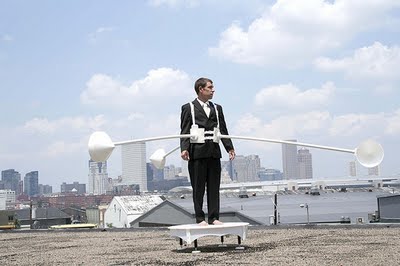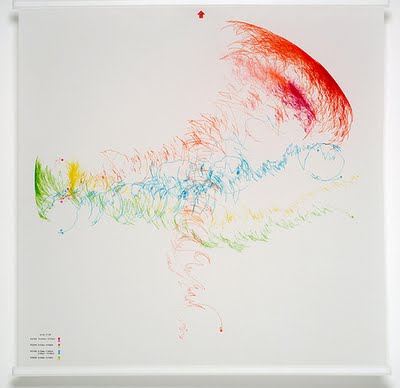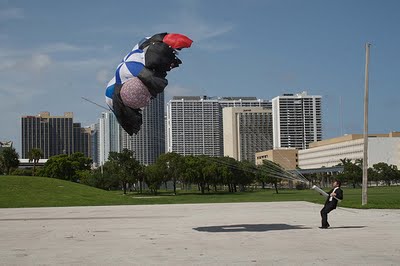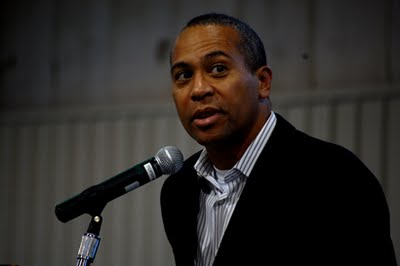Reinharz: “This is in no way a ‘sour grapes’ reaction to an unfavorable story about Brandeis”
Meanwhile, school overestimated endowment losses by 42%
Brandeis University is contemplating suing Harper’s Magazine for slander or defamation for the article “Voodoo Academics: Brandeis University’s hard lesson in the real economy” in the magazine’s November issue, according to an e-mail President Jehuda Reinharz (pictured above) recently sent to Brandeis staff. (The entire e-mail is reproduced below.)
The
Harper’s article by Christopher R. Beha (available only by subscription) says Brandeis’s financial problems – which Brandeis leaders said in January required it to close its Rose Art Museum and sell its collection – stem from (1) risky investments in hedge funds and private equity and (2) racking up debt to fund building expansion and renovation projects. “If Brandeis keeps using money it doesn’t have to buy things it doesn’t need, it may soon be the university itself that needs rescue,” Beha concludes.
Reinharz insists that Beha’s financial numbers are incorrect and that the Waltham university's investments and borrowing for construction are not the cause of its economic woes. “In addition to being factually inaccurate,” Reinharz writes, “the article is insulting to all members of the Brandeis community as its assumptions about Brandeis and the higher education sector involve gross mischaracterizations. This is in no way a ‘sour grapes’ reaction to an unfavorable story about Brandeis. Once we determined that there a lack of journalistic ethics in the manner in which the magazine conducted its research and reporting, we aggressively fought against the publication of this article.”
Now that Harpers’s has printed the article, cash-strapped Brandeis is mulling spending money on suing the magazine. Reinharz writes: “We recognize that the legal process for slander/defamation is an arduous task and one that is difficult to prove; however, we feel that some affirmative course of action must be taken to protect the reputation of Brandeis given that this article is likely to have circulation on the Internet far beyond the circulation numbers of Harper’s.”
However, Brandeis spokesman Dennis Nealon tells The New England Journal of Aesthetic Research, “The University has taken no steps to pursue any legal action [against Harper’s].”
The New England Journal of Aesthetic Research's favorite part is Reinharz’s complaint that: “What is important here is that the basic rules of journalism insist that media outlets must make attempts to interview sources for a particular story before any story is moved to the ‘fact checking’ phase. This was not done by the reporter for Harper’s.”
Financial numbers for Brandeis are difficult to come by. The budget stats the school does release – at least to me – tend to be bits and pieces provided without overall budget numbers that would allow observers to put these details in context.
For example in May, when I sought interviews with Reinharz, Brandeis executive vice-president and chief operating officer Peter French, provost Marty Wyngaarden Krauss, and board of trustees chairman Malcolm Sherman to confirm their positions and double-check financial information for an essay I was writing for The Boston Phoenix, Nealon told me: “There is the issue of whether there is anything new to add with interviews. So much has been said and written already. I'm talking about my possibly getting the reply: ‘more interviews, Dennis? why?’” In the end, they all declined to speak with me or clarify Brandeis’s financial numbers.
In October, I again requested financial information, including Brandeis budget totals for this school year and the two previous years. Nealon provided a little information about this year’s Rose budget but none of the Brandeis overall budget numbers.
Meanwhile, Brandeis itself has noted that its budget projections have been off. In an
Aug. 24 memo, French reported that in March the school overestimated its endowment losses by 42 percent: “At the May meetings, the administration also revised the endowment return projection for FY 2009 to -20% from an earlier March estimate of -30%. The actual endowment return in FY 2009 was -17.3%.”
Economic changes of the past 18 months have been incredibly difficult to forecast, but French’s report will not reassure those who suspect that Brandeis leaders exaggerated the school's financial difficulties in January as an excuse to raid the Rose’s art collection.
* * * * * * * * * * * * * * * * * * * * * * * * * * * * * *
Brandeis President Jehuda Reinharz's entire e-mail about the Harper's Magazine article:Dear Colleagues,
In their November 2009 issue, Harper’s Magazine published a story entitled “Voodoo Academics: Brandeis University’s hard lesson in the real economy.” In addition to being factually inaccurate, the article is insulting to all members of the Brandeis community as its assumptions about Brandeis and the higher education sector involve gross mischaracterizations. There is a story behind their story and I want to share that with you firsthand.
This is in no way a “sour grapes” reaction to an unfavorable story about Brandeis. Once we determined that there a lack of journalistic ethics in the manner in which the magazine conducted its research and reporting, we aggressively fought against the publication of this article.
To fully understand and appreciate the egregious nature of this situation, we have provided, below, a timeline of events leading up to the story’s publication:
We first became aware that Harper’s intended to write an article on August 31st when their reporter, Chris Beha, called Dan Feldman, Brandeis's Vice President for Capital Projects. During that phone call, and in a subsequent email sent by Beha to Feldman on August 31st, Beha indicated that he was "working on an article about campus expansions over the past generation" and said that he was "interested in considering some of the capital improvements that Brandeis has made."
Beha openly admitted that his interest in the topic of Brandeis was the result of a conversation with his aunt, Ann Beha, founder of Ann Beha & Associates, an architectural firm that unsuccessfully pursued business with Brandeis in the summer of 2004 related to the new Fine Arts Center. According to Dan Feldman’s recollection, Ann Beha made derogatory comments to him that implied that Brandeis had demonstrated a lack of judgment and made a poor decision in not hiring her.
On September 3rd, 2009 Peter French’s office received a call from Genevieve Smith, an editor at Harper's, who was "fact-checking an article by Beha on Brandeis University's financial woes." She wanted to confirm some of the figures that have already been reported in the press, including articles that dated back to January 2009 in the Daily Beast, information that was inaccurate when published this past January. What is important here is that the basic rules of journalism insist that media outlets must make attempts to interview sources for a particular story before any story is moved to the “fact checking” phase. This was not done by the reporter for Harper’s.
Upon hearing that Harper’s was in the fact-checking stage of an article without having ever spoken to anyone at Brandeis in any detail and was relying on inaccurate information from outdated articles, Peter French arranged to speak with the reporter and the fact-checker on September 8th and 9th. During those conversations, Peter corrected the inaccuracies that Harper’s was culling from outdated press articles and provided additional information and background. None of the information French provided in these conversations was used in the article.
Our outside legal counsel sent a letter to the editor of Harper’s on September 14th demanding that editors hold the article until a thorough review of Beha’s reporting process and his apparent conflict of interest were conducted. In addition, our attorney asked that Harper’s confirm the story’s accuracy and ensure that other people at Harper’s reviewed Beha’s story.
In a final attempt to ensure that Harper’s would be using factual information for their story, Peter French sent an email to the editor on October 2nd recapping the points he had discussed with Beha and Smith. Peter received no response to this email.
The article is rife with factual inaccuracies and unsupported conclusions. What follows are some examples:
Perhaps most infuriating among these is this: “What that $28,000 surcharge buys—the financial and social return on a degree from an elite private university—cannot be found in a classroom.” This is an insult to everyone at this institution. Our students year after year talk about the outstanding quality of their educational experiences at Brandeis and the exceptional and world class faculty here. My view is that these more than justify the expense of a Brandeis education.
The article also states that “Over the past decade, Brandeis, like many of its peer institutions, adopted the American corporate principles of fiscal shortsightedness and growth-for-growth’s sake that provoked the current economic fiasco.” In reality, Mr. Beha sought no information—and from the article, appears to have no information—about the circumstances that led to the University’s financial plan and about the very serious needs that were the basis for the various capital projects carried out since 1999. Brandeis has been judicious in our decisions about capital projects and the reporter appears to know nothing about our integrated strategic plan or our campus master plan, which have been the basis for decisions about the financing and execution of our capital projects. In any case, our greatest investment, year after year, is in our students, 71% of whom receive financial aid, with a per-student average of over $25,000 in grants and scholarships. The faculty and this level of support for our students are the main reasons student quality has been rising year after year at Brandeis.
Mr. Beha writes, “For Brandeis, that loss [in the endowment] amounted to roughly $200 million.” Mr. Beha cites the FY09 starting value of our endowment ($712M), but makes no mention of the fact that at the end of FY09, the Brandeis endowment had unrealized losses of $125.4 million (not $200M), and that in the first three months of the new fiscal year, we have an unrealized gain of approximately $44 million. This amounts to a Fiscal Year 2009 return of -16.96%, which compares with a median loss of -19.14% for foundations and endowments as a whole, according to the Wilshire Trust Universe.
The article states that “Following the lead of universities with multi-billion-dollar endowments, such as Harvard and Yale, Brandeis shifted funds from low-risk, low-yield investments into “alternative investments” like hedge funds and private equity.” In fact, Brandeis has been implementing a diversified investment strategy, including alternatives, for over a decade. In that time, the model has proved beneficial through various economic climates. In particular, for FY09, the Endowment’s hedge fund investments reported an aggregate loss of 5%, compared to the S&P 500 loss of 17.4% for the same time period. Brandeis’ alternative investments actually had the effect of softening the blow from the economic downturn.
The article also states, “Meanwhile, like so many American institutions (and households), Brandeis had been living beyond its means, paying on credit for a seemingly endless string of expansion and renovation projects.” The reality is that, since 1999, just under half of the cost of major capital projects at Brandeis has been gift funded. Only 43% of that cost has been debt-funded, with the balance from University funds that had been set aside for capital projects.
We recognize that the legal process for slander/defamation is an arduous task and one that is difficult to prove; however, we feel that some affirmative course of action must be taken to protect the reputation of Brandeis given that this article is likely to have circulation on the Internet far beyond the circulation numbers of Harper’s. We are analyzing our options carefully. I welcome your ideas and suggestions.
We have all worked too hard to bring Brandeis to a level of excellence far beyond our size. We are a great University and I will not allow anyone to denigrate our administration, faculty, students, and alumni.
Sincerely,
Jehuda Reinharz
* * * * * * * * * * * * * * * * * * * * * * * * * * * * * *
Previously:Dec. 23:
Rose freezes curator searchJan. 26:
Brandeis to close RoseJan. 27:
Update: Brandeis to close Rose, sell artJan. 27:
Brandeis president’s e-mail on RoseJan. 27:
Brandeis’s moneyJan. 27:
AG on Brandeis's plansJan. 29:
Brandeis’s liquidator-in-chiefJan. 29:
The first painting Brandeis should pawnJan. 29:
Question: Brandeis financial management?Feb. 5:
Brandeis won’t close Rose?Feb. 5:
Will defunct Rose replace defunct Safra Center plan?Feb. 9:
Open discussion at the Rose tomorrowFeb. 11:
How do you solve Brandeis’s budget crisis?March 16:
Rose family objects to closing Rose museumMarch 16:
What is the Rose family saying?May 15:
The end of the Rose?May 20:
Voices from the Rose.May 20:
Rose collection treasures.July 27:
Rose overseers sue to preserve museum, stop sale of art: If museum can’t be saved, they say give art to new Rose Preservation Fund.
July 31:
Key weaknesses in the Rose suit.
Sept. 15:
Brandeis seeks dismissal of Rose lawsuit.
Sept. 25:
Brandeis president announces resignation.
Sept. 28:
Brandeis’s Rose Museum: Where to go from here?.
Oct. 2:
Administrative exodus from Brandeis.
Oct. 8:
Rose budget increased?.
Oct. 14:
Brandeis agrees to not sell some Rose art: Attorneys disagree on what happened at hearing yesterday.
Oct. 16:
Attorney General investigates Brandeis over Rose.
Oct. 28:
Quiet protest at “Rose at Brandeis" opening: Cops attend too, while Brandeis board meets.
Photo by The New England Journal of Aesthetic Research.
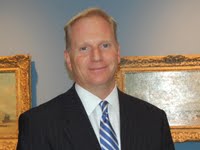 Christopher J. Brownawell has been named the new director of the Farnsworth Art Museum, the Rockland, Maine, museum has announced. Brownawell, who has been director of the Academy Art Museum in Easton, Maryland, since 1993, is expected to begin work at the Farnsworth on Feb. 1.
Christopher J. Brownawell has been named the new director of the Farnsworth Art Museum, the Rockland, Maine, museum has announced. Brownawell, who has been director of the Academy Art Museum in Easton, Maryland, since 1993, is expected to begin work at the Farnsworth on Feb. 1.






